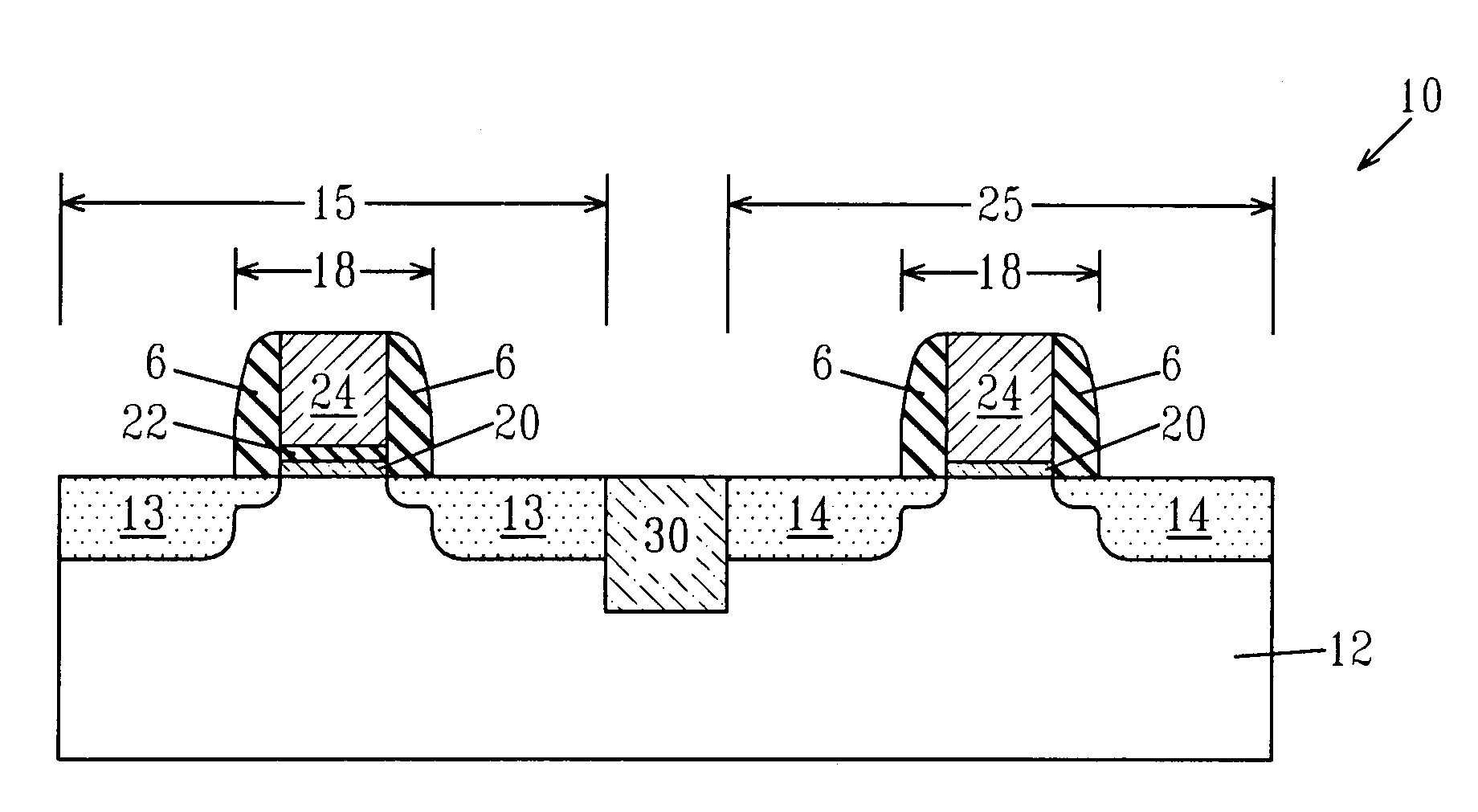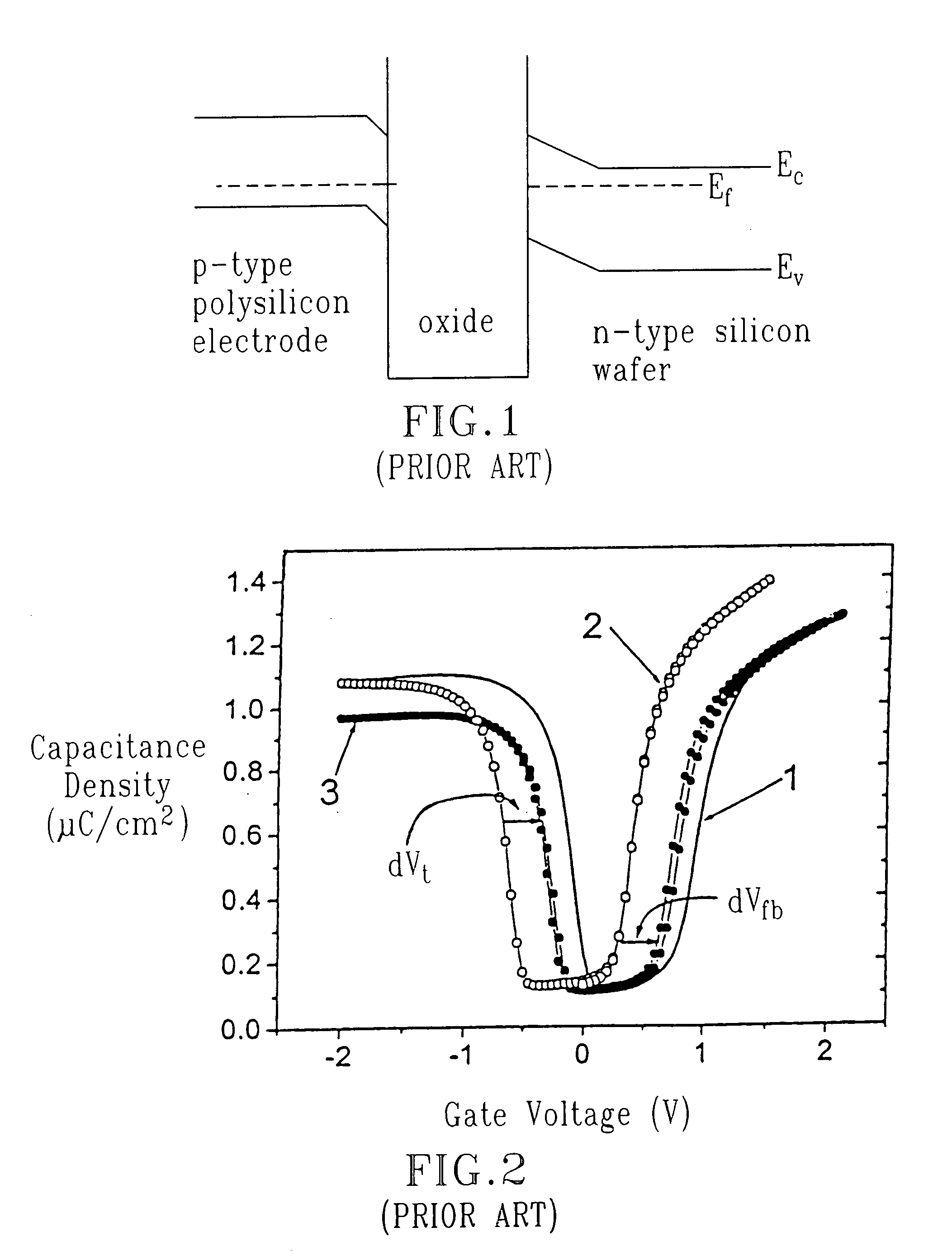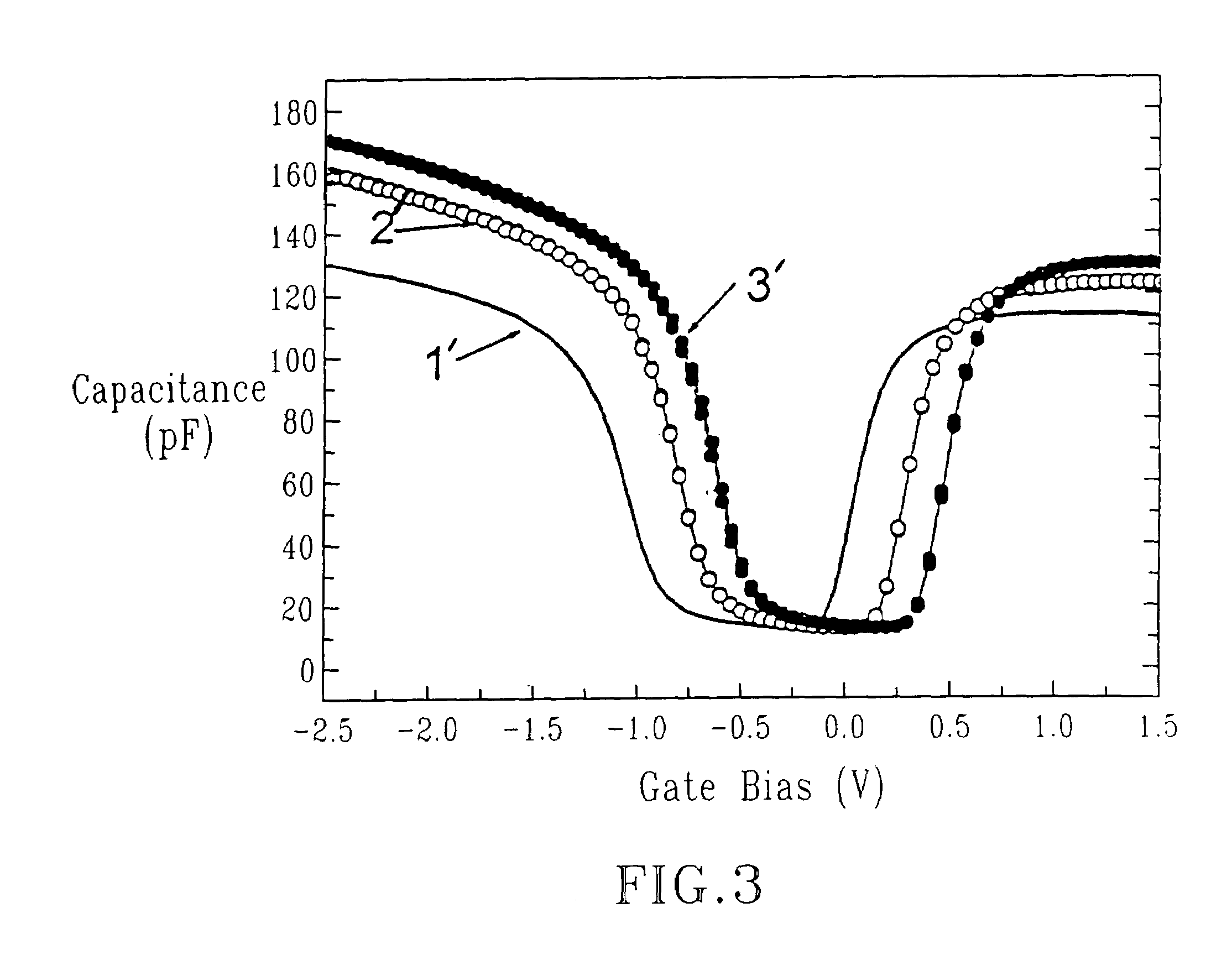Selective implementation of barrier layers to achieve threshold voltage control in CMOS device fabrication with high k dielectrics
a technology of cmos and barrier layer, applied in the field of semiconductor device structure, can solve the problems of flatband voltage vsub>fb /sub, inability to develop a high k gate dielectric cmos technology, and undesirable prior etchants such as koh or dry reactive etching techniques
- Summary
- Abstract
- Description
- Claims
- Application Information
AI Technical Summary
Benefits of technology
Problems solved by technology
Method used
Image
Examples
example 1
[0080]In this example, a Hf oxide or silicate layer (high k dielectric) was grown on a silicon substrate that was pre-patterned with an isolation region separating an nFET device region from a pFET device region. The Hf oxide and silicate were deposited using metal organic chemical vapor deposition (MOCVD) and atomic layer chemical vapor deposition (ALCVD). The thicknesses of the Hf oxide and silicate layers were in the range of about 2 nm to about 4 nm and for the silicates, the composition was approximately HfxSiyO4 with y / (x+y) being approximately 0.2–0.3. These oxides were deposited on an n-type silicon wafer having 0.3 nm to 1.2 nm thick silicon oxide or silicon oxynitride coating. The presence of this silicon oxide or silicon oxynitride coating is optional.
[0081]Following deposition of the Hf oxide and silicate, the wafers were loaded in an ultra-high vacuum deposition chamber for aluminum nitride deposition (insulating interlayer). Aluminum nitride was deposited by evaporatin...
PUM
 Login to View More
Login to View More Abstract
Description
Claims
Application Information
 Login to View More
Login to View More - R&D
- Intellectual Property
- Life Sciences
- Materials
- Tech Scout
- Unparalleled Data Quality
- Higher Quality Content
- 60% Fewer Hallucinations
Browse by: Latest US Patents, China's latest patents, Technical Efficacy Thesaurus, Application Domain, Technology Topic, Popular Technical Reports.
© 2025 PatSnap. All rights reserved.Legal|Privacy policy|Modern Slavery Act Transparency Statement|Sitemap|About US| Contact US: help@patsnap.com



